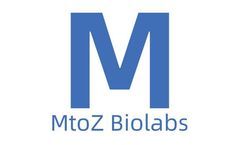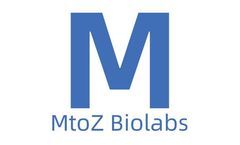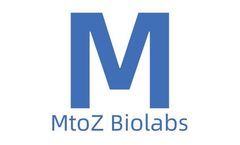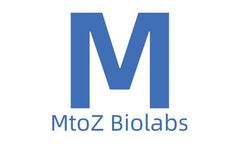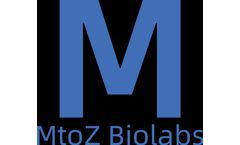Refine by
Metabolism Disease Articles & Analysis
32 articles found
Understanding the deep connection between Lipid Metabolism and these hormones, along with the importance of precise Steroid Hormone Analysis, opens a window into our health, development, and disease. At its core, Lipid Metabolism encompasses the intricate biochemical processes involved in the synthesis, breakdown, and transport of fatty acids, ...
TCA Cycle Analysis in Research Recent advancements in metabolomics have shed light on the importance of TCA Cycle analysis in various fields of research, including cancer biology, cardiovascular health, and metabolic disorders. By examining the levels of TCA Cycle intermediates and associated metabolites, scientists can gain insights into cellular metabolism and ...
Metabolic Health and Disease Research Alterations in NAD/NADH levels are associated with a wide range of diseases, including cancer, diabetes, neurodegenerative disorders (e.g., Alzheimer’s and Parkinson’s), and mitochondrial diseases. ...
These protein drugs exhibit certain biological activity and can prevent, diagnose, and treat diseases in humans, animals, and plants. Compared with small molecular drugs, recombinant protein drugs offer advantages such as high activity, high specificity, and low toxicity, and are therefore favored by researchers. At present, recombinant protein drugs are widely used in various ...
They are implicated in a wide range of conditions, from cardiovascular and metabolic disorders to neurological diseases and cancers. By facilitating the early stages of the drug development pipeline, GPCR Screening Services help streamline the identification of lead compounds, optimizing the chances of successful therapeutic outcomes. ...
This process aims to infer the metabolic functions of microbial communities, shedding light on their roles in host metabolism and potential disease associations. ...
This mimetic action allows researchers to enhance or restore the expression of target genes that are otherwise downregulated in diseases such as cancer, neurodegenerative disorders, and cardiovascular diseases. ...
They have shown great potential in treating various diseases, such as cancer, autoimmune diseases, infectious diseases, and metabolic disorders. ...
These proteins possess certain biological activities and can prevent, treat, and diagnose diseases in humans, animals, and plants. Compared to small molecule drugs, protein drugs have advantages such as high activity, high specificity, and low toxicity, making them highly favored by researchers. Currently, protein drugs are widely used in various fields, including cancer, ...
In addition, peptidomimetics can disrupt or potentiate interactions between proteins, which may be useful in the treatment of related diseases. In terms of targeted drug delivery, peptidomimetics can achieve target specific cells or tissues in the body. When peptidomimetics are conjugated with targeted antibodies or ligands, they can deliver drugs by selectively getting into ...
Observing such differential expression is crucial for understanding cellular physiology and disease mechanisms. For example, some proteins may be upregulated or downregulated in health and disease states, or between normal and treated cells.Detection MethodsThe most commonly used technique is mass spectrometry, particularly liquid chromatography-tandem mass ...
Secretome field can be used to study the regulation and interaction of these pathways.Functional AnalysisThe secretome field also involves understanding the biological functions of secreted proteins, such as how they mediate cell communication, participate in immune responses, regulate metabolism, and affect disease progression.Disease ResearchSecreted proteins ...
It is a crucial step in cellular energy metabolism. In this process, electrons are transferred from one carrier to another through a series of oxidation-reduction reactions and are ultimately passed to oxygen to form water. ...
Dysbiosis of the intestinal flora is associated with a variety of human metabolic diseases, such as obesity, diabetes mellitus, and nonalcoholic fatty liver disease. ...
Modern epigenetic features refer to the alteration of DNA and/or associated proteins without nucleotide sequence variance, which transmits the data contained to the next generation. It has been considered that diseases are generally influenced by obtained biological alterations, but it is becoming evident that any phenotype is the result of a complex interplay between genotype, ...
Diabetes, specifically Type 1 and Type 2 Diabetes Mellitus, remains one of the most commonly encountered metabolic diseases worldwide. The complexity and diversity of these conditions necessitate the development of detailed medical models for a comprehensive understanding of the diseases. ...
Functions of AMPK Once activated, AMPK regulates four major classes of metabolism in mammals: protein metabolism, lipid metabolism, sugar metabolism, and autophagy and mitochondrial homeostasis, encompassing almost the entire physiological metabolic activity of living organisms. AMPK can stop the ...
The precise modification of peptides through bioconjugation provides opportunities for the development of peptide-based therapeutics targeting cancer, neurodegenerative disorders, or metabolic diseases. Peptide RNA conjugation: It refers to the process of attaching a therapeutic peptide molecule to an RNA molecule to create a novel therapeutic entity. ...
The imaging results help demonstrate neurons metabolize glucose through glycolysis. They also demonstrated the potential of Chaumeil's imaging method to study changes in glucose metabolism in people with diseases such as Alzheimer's and Parkinson's. ...
Predictive metagenomics profiling OTU abundance table can be further used to presume for metabolic functions. It is a process to understand the role of the microbiome on host metabolism and disease. ...






